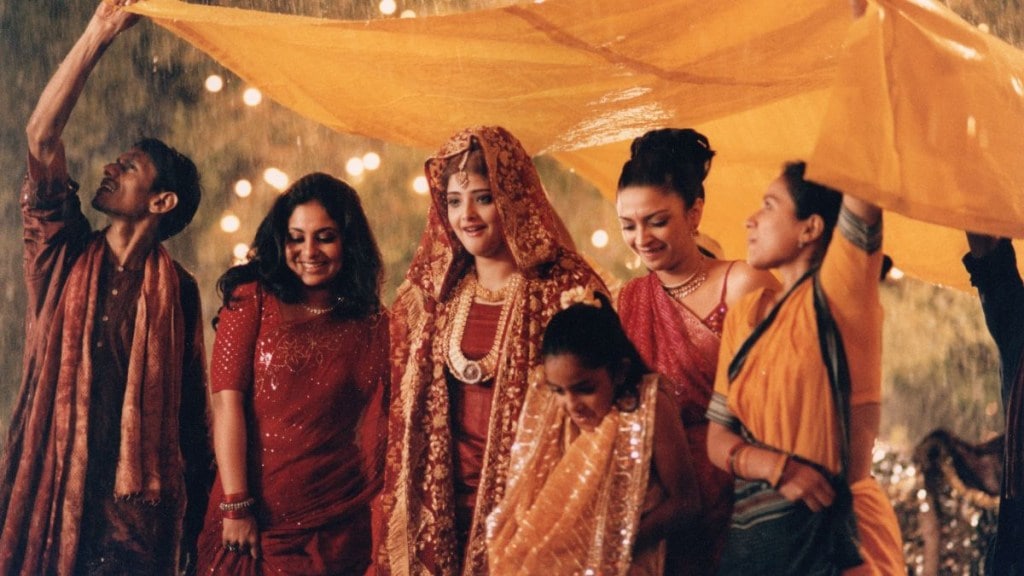Since the 1990s, Shah Rukh Khan has been the undisputed face of Indian cinema on the global stage. From Dilwale Dulhania Le Jayenge and My Name is Khan to Jawan, his films have consistently performed well across North America and Europe, occasionally even outpacing major Hollywood releases. In parallel, Aamir Khan carved his own legacy in China with unprecedented box office success. Yet, in 2001, it wasn’t either of these two Bollywood giants who set the international box office ablaze. It was a small-budget, star-less film that would go on to make history.
That film was Monsoon Wedding.
In 2000, during her time at Columbia University’s MFA film program, screenwriter Sabrina Dhawan penned a script about the chaos and emotion of a Punjabi wedding in Delhi. Her deeply personal and culturally rich narrative caught the attention of acclaimed filmmaker Mira Nair. The result was Monsoon Wedding – a cross-cultural production backed by studios from India, the US, Italy, France, and Germany.
Monsoon Wedding budget and cast
With a modest budget of just $1.2 million (around Rs 5.5 crore at the time), Monsoon Wedding brought together a stellar cast of theatre and television actors. The ensemble included stalwarts like Naseeruddin Shah, Lillette Dubey, Shefali Shah, Vijay Raaz, Parvin Dabas, Rajat Kapoor, Roshan Seth, Kulbhushan Kharbanda, and Soni Razdan. Newcomers Vasundhara Das, Randeep Hooda, and Ram Kapoor also made their debut in the film. Despite the absence of big-ticket names or massive promotional campaigns, the film was destined to surprise everyone.
Upon its release, Monsoon Wedding found its core audience not in India, but in North America. The film grossed over $13 million in the US and Canada alone, something no Indian film had done at the time. That North American run would remain the highest-grossing for an Indian film in that region for years, until it was finally surpassed by Baahubali in 2017.
Globally, Monsoon Wedding earned an impressive $30.8 million (approximately Rs 145 crore), with a significant chunk of revenue coming from North America and Europe. It went on to become the highest-grossing Indian film in overseas markets – a record it held for over a decade before being overtaken by Salman Khan’s Bajrangi Bhaijaan and Aamir Khan’s Dangal.
What makes Monsoon Wedding’s success even more remarkable is the cinematic context of 2001. That same year, Shah Rukh Khan had two major international releases – Asoka and Kabhi Khushi Kabhie Gham. Both performed well at the overseas box office, but their combined collections totaled just $14 million (about Rs 60 crore), thus falling short of Monsoon Wedding’s solo achievement.
Aamir Khan also had a landmark release in 2001 with Lagaan, which earned an Oscar nomination for Best Foreign Language Film. Despite its critical acclaim and global visibility, Lagaan managed only $3 million (roughly Rs 13 crore) in overseas earnings. Again, far behind Nair’s Monsoon Wedding.
The unexpected triumph of Monsoon Wedding redefined what Indian cinema could achieve on a global platform. Without conventional Bollywood glamour or box office giants, the film succeeded purely on the strength of its storytelling, performances, and cultural resonance.

